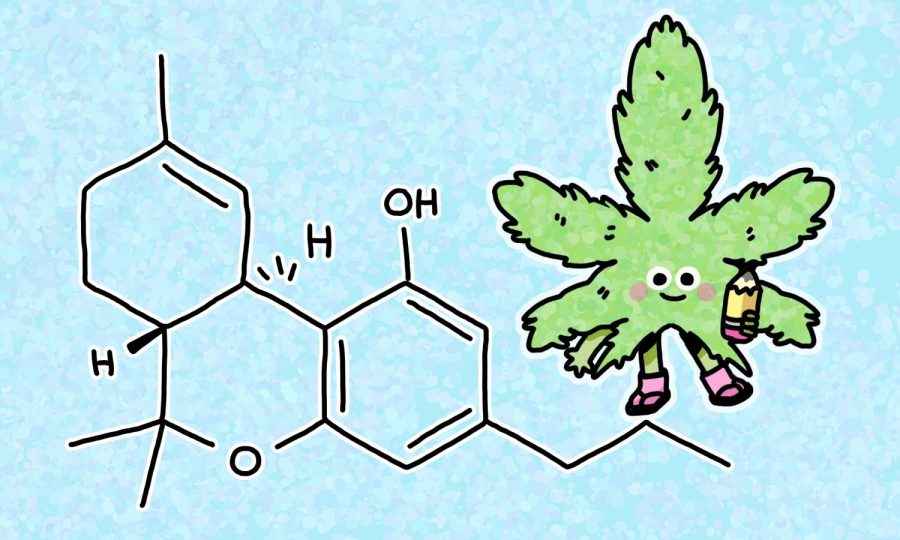Weed to Know: Introducing ‘weederall,’ your productive cannabinoid bud
Collegian | Trin Bonner
March 9, 2023
The most well-known cannabinoids found in cannabis products are THC and CBD, but if you know where to look, you can open your world up to a plethora of different cannabinoids that create a variety of effects.
One of these less common but super interesting cannabinoids is THCV, which stands for tetrahydrocannabivarin and binds to the same receptor as THC, just less strongly. Most often found in sativa strains, THCV is a psychoactive cannabinoid aimed at improving productivity and releasing tension and anxiety.
THCV is a neuroprotective cannabinoid, which means it can be used therapeutically without risking any further neurological damage, and thus, it could be effective in providing relief for patients with Alzheimer’s or Parkinson’s disease or post-traumatic stress disorder.
“THC can cause harm to neurotransmitters and myelin because it is a toxin, and it’s especially harmful to a developing brain, but studies are finding that THCV does the opposite, so I’m hopeful that we can start looking at the positive cannabinoids and benefits of them in the cannabis plant,” said Chase Pritchett, a budtender at Verts Neighborhood Dispensary.
THCV is sometimes affectionately referred to as “diet weed“ or “weederall“ because it suppresses your appetite instead of giving you raging munchies and does not cloud your brain to the point where you are no longer productive. This makes strains or edibles with THCV great for daytime smoke sessions if you want to lessen tension and stay motivated.
“I don’t necessarily remember not being hungry, but I also didn’t know much about the appetite suppressant side of it and wasn’t looking for that benefit or effect at the time,” Pritchett said, speaking of his experience first trying a strain with THCV. “I’m definitely curious now, though.”
“It will take market interest to produce more valuable data about THCV and other harder-to-come-by cannabinoids, but it’s certainly possible the future will hold great things for THCV.”
It’s hard to find THCV-heavy strains in the cannabis market generally, which makes researching the cannabinoid more difficult due to the lack of complete market interest.
The few THCV-heavy plants producing have very low yields, so you may have to spend a pretty penny to acquire it; however, some people have attempted isolating the cannabinoid and then putting it in things like edibles.
“I see THCV most commonly in edibles anywhere from (a 1/2 milligram to 5 milligrams) I would say, and this is mostly because cannabis growers don’t want to pay for the testing for THCV in the flower before they distribute it for (sale),” Pritchett said. “From what I’ve read about it, though, you don’t necessarily need high doses of it for it to be effective.”
It will take market interest to produce more valuable data about THCV and other harder-to-come-by cannabinoids, but it’s certainly possible the future will hold great things for THCV.
Reach Bella Eckburg at cannabis@collegian.com or on Twitter @yaycolor.








